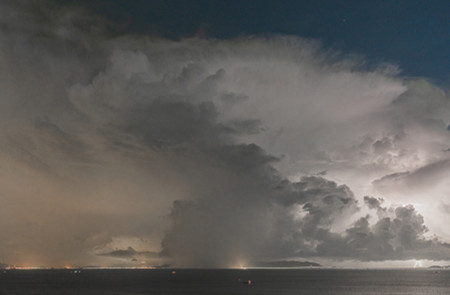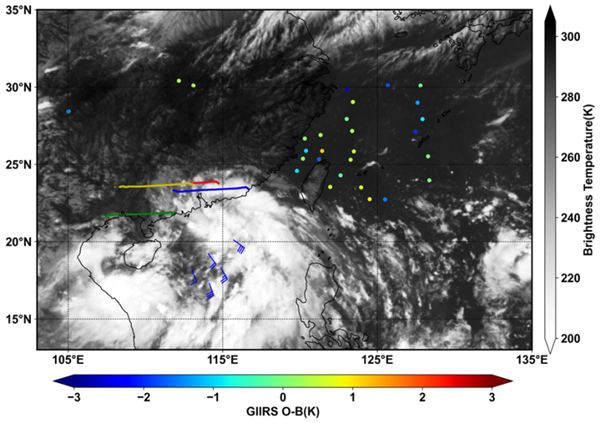中国科学院大气物理研究所大气科学和地球流体力学数值模拟国家重点实验室
State Key Laboratory of Numerical Modeling for Atmospheric Sciences and
Geophysical Fluid Dynamics (LASG)
Institute of Atmospheric Physics, Chinese Academy of Sciences
State Key Laboratory of Numerical Modeling for Atmospheric Sciences and
Geophysical Fluid Dynamics (LASG)
Institute of Atmospheric Physics, Chinese Academy of Sciences

Vol.18/No.18 December 2022
Enhanced Observations for Better Forecasting Tropical Cyclones over the South China Sea
The campaign, starting on 5 August, collected observations simultaneously using China's FengYun-4B geostationary satellite, aircraft equipped with dropsondes (weather devices designed to be dropped from aircraft at specified altitudes), and balloons equipped with radiosondes (a small instrument suspended below the balloon). The project was a collaboration between the China Meteorological Administration (CMA), Institute of Atmospheric Physics (Chinese Academy of Sciences), Fudan University, and the Hong Kong Observatory (HKO), the latter of whom has a six-year history in collecting meteorological data using aircraft.

The sky of storm clouds before TC Mulan landed. (Image by GAO Si)
"We at HKO were honoured to have the chance to collaborate with the CMA and other scientific institutes on the Chinese mainland for this project", says Mr. Pak-Wai CHAN of HKO, who arranged the aircraft flight into the TC in collaboration with the Government Flying Service in Hong Kong. "This joint effort is a landmark in enhanced meteorological observations over the South China Sea."
"We were excited to find that the enhanced observational data displayed positive impacts on both the track and intensity forecasts of TC Mulan", explains Prof. HAN Wei from the Earth System Modeling and Prediction Centre at the CMA, who arranged the satellite observations and the subsequent operational forecasts. "Moreover, rainfall forecasts along the South China coast were more accurate with these data".
These results confirm the findings of the team's previous research in which dropsonde data were used to observe four TC cases in 2020.
"We hope to conduct more such field campaigns in the future to collect evermore useful observations of TCs. Not only operational forecasting but also basic scientific research will benefit greatly from these data", concludes Dr QIN Xiaohao from the Institute of Atmospheric Physics, Chinese Academy of Sciences, who identified the optimal observation area for both the satellite and aircraft measurements in this campaign.

Overview of observations recorded on 9 August 2022: brightness temperature from the satellite instrument and wind vectors from the dropsondes (blue wind bars) and radiosondes (colored lines). Colored dots denote the differences between observations and simulations. (Image by QIN Xiaohao)
Citation: Chan P.-W., W. Han, B. Mak, X. H. Qin, Y. Z. Liu, R. Y. Yin, and J. C. Wang, 2023: Ground–space–sky observing system experiment during tropical cyclone Mulan in August 2022. Adv. Atmos. Sci., https://doi.org/10.1007/s00376-022-2267-z.
Link:https://link.springer.com/article/10.1007/s00376-022-2267-z
Add: No.40, Huayanli, Beichen West Road, Chaoyang District, Beijing P.O. Box 9804, 100029, China
E-mail: lasg_newsletter@lasg.iap.ac.cn
Editors: Chuanyi Wang (wangcy@lasg.iap.ac.cn), Kangjun Chen(ckj@lasg.iap.ac.cn)
E-mail: lasg_newsletter@lasg.iap.ac.cn
Editors: Chuanyi Wang (wangcy@lasg.iap.ac.cn), Kangjun Chen(ckj@lasg.iap.ac.cn)